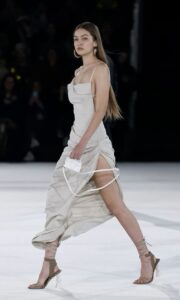In recent years, the modeling industry has been grappling with the shift back toward a focus on thinner models, despite the widespread push for body diversity and inclusivity.
Many fashion houses and brands, particularly in high fashion, have been critiqued for returning to a preference for ultra-thin models, often citing traditional standards of beauty that emphasize extreme slimness.
This has sparked debates within the industry about the potential negative impact on body image, especially as the conversation around inclusivity and the celebration of different body types continues to gain momentum.
Critics argue that this resurgence of thinness could undo the progress made in promoting body positivity, diversity, and self-acceptance, which has been championed in recent years by both influencers and larger fashion campaigns.

On the other hand, proponents of the return to thinner models argue that it’s a reflection of fashion’s ever-evolving nature and its connection to specific aesthetic trends, often driven by haute couture and runway shows.
Some designers continue to prefer a very specific body type, believing it best showcases their collections, which are often more about artistic expression than reflecting real-world body diversity.
While the conversation about body inclusivity in fashion remains complex, the increasing visibility of plus-size models and more diverse representations of beauty in mainstream campaigns shows that there is still a significant demand for variety in modeling.
The tension between these competing viewpoints indicates that the industry is still navigating how to balance artistic vision with societal shifts towards broader representation and self-acceptance

